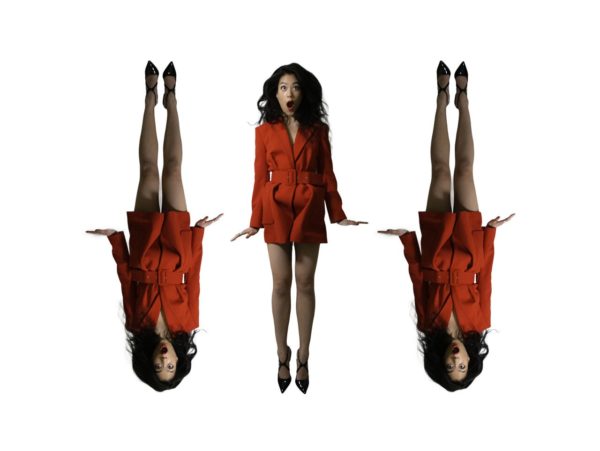Table of Contents
New and increasingly horrifying statistics about the worldwide production of textile waste are published each year. Especially troubling are the emissions produced throughout the lifecycle of all textile goods such as clothes, furniture and carpets. Beginning with the significant amount of pollution created during the production phase to the end of life phase. Last year alone, a fifth of unsold mass-produced clothes were shredded, burned (creating methane) or sent to landfill. More than 10 million tons of textile waste end up in landfills each year, which is largely due to the fast fashion industry and an overwhelming supply of donated clothing. The greatest problem with textiles entering landfills are the greenhouse gases (GHGs) produced. The decomposition process for natural fibers takes years and man-made fibers even longer, polluting the air and surrounding groundwater.
If human textile consumption continues as usual, the irreversible impacts on the environment will not slow down. Until the fashion industry addresses the problem of textile waste it will never be truly sustainable. The irony of the situation is that about 95% of all textiles could be recycled, but in actuality, only 1% is. Why is this the case? The short answer is it’s an expensive, complex and time consuming process. But could textile recycling be the solution? Or maybe circular fashion?
Until the fashion industry addresses the problem of textile waste it will never be truly sustainable.
Textile recycling best practices
A distinction is often made between fashion and textile recycling. Fashion recycling can happen in three ways: the first method is to use textiles that are manufactured from recycled fibres. For example, clothes or shoes made from recycled polyester from plastic water bottles. One company that does this well is Rothys. The company focuses on circularity and also has a pilot recycling program in the works. However, the question I always ask myself is, will demand perpetuate plastic consumption?
The second method is to “upcycle” clothes, giving them a second life. Some consider this zero-waste fashion. This could be done by using unwanted factory surplus materials or using donated or vintage clothes. A third method is to repair or re-fashion second-hand garments. It is found that 70% of the world’s population uses second hand-clothes so why not give them a fresh look that can keep up with trends in a sustainable manner?
For all of the textiles that can’t be upcycled, they can be recycled. The textile recycling process is different for natural and synthetic fibers. Natural fibers are separated by fabric type and color (this saves a lot of water so that re-dyeing isn’t required) and depending on the state of the materials, are shredded or blended with other fibers (recycled or not). However, given the fragility of natural fibers, if they are not spun into yarn, they are usually reused as stuffing for furniture, mattresses, insulation for buildings or even kitchen rags.
For synthetic textiles made from petroleum-based polyester, they can be shredded and put through an extruder melting down the synthetic material into polyester chips that are used to create new polyester fibers. This is the method used for recycled sportswear. The downside however, is that the majority of recycled polyester fibers will not be recycled a second time.
At present, textile recycling still faces problems, but as more and more organizations recognize the need to make major changes, improvements for more effective textile management are being developed. The T4T (Textiles for Textiles) machine was developed to improve the process of textile sorting based on fiber composition, color or other aspects like its chemical combination.
However, as of now, creating a true zero-waste piece of clothing is not realistic, but circular fashion could be the future if all stakeholders are committed to collaboration throughout value chains.
What is circular fashion? Is it possible to have a zero-waste piece of clothing?
Circular fashion, defined by Green Strategy, is any piece of clothing, shoe or accessory designed and produced using materials in their full capacity for as long as possible. This includes reusing, recycling and supporting the regeneration of ecosystems, in a closed-loop system. Circular fashion eliminates the concept of waste. But is it possible to have zero-waste fashion? Well, a distinction can be made between pre- and post-consumer zero-waste fashion. The former refers to brands that recycle their own materials or cut patterns that eliminate waste (3d printing). The latter refers to keeping clothes out of landfills through fashion recycling methods. Arguably both must be considered, as well as product packaging, and energy usage. Theoretically, renewable energy could be used throughout supply chains and all packing could be compostable or recyclable. However, as of now, creating a true zero-waste piece of clothing is not realistic, but circular fashion could be the future if all stakeholders are committed to collaboration throughout value chains.
All of this may be overwhelming, so here are some tips on how to reduce textile waste outside of thrifting:
- Repairing, mending and tailoring your clothes instead of throwing them away. Or upcycle them creating something entirely new!
- Stop buying one-time use clothes and for your next event, borrow an outfit from a friend.
- Support manufacturers who use sustainable materials and practices and who publish their sustainability strategies and eco-friendly sources.
- Build up a capsule wardrobe with pieces that are versatile, classic and can be used in many different ways.
Resources
1. Ethicalfashionforum.com
2. Theguardian.com
3. Oakdenehollins.co.uk
4. Recycling.about.com
5. Ecouterre.com








